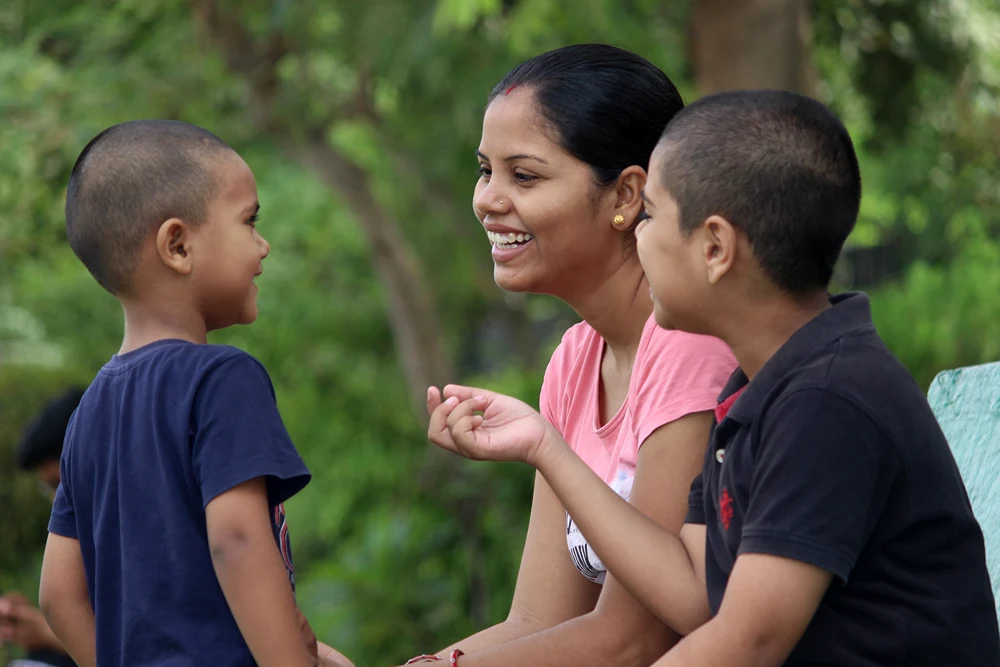Starting the adoption process in California can feel complex, but having the right guidance makes all the difference. Clarity and preparation are the strongest tools prospective parents can bring to the journey.
Below are the requirements and decisions involved so you can move forward with confidence and informed intention. Preparation and education about the process will put you on the right path to expanding your family.
Understanding the Adoption Landscape in California
California’s adoption system is designed to protect the safety, stability and long-term well-being of children. With clearly defined procedures and state-enforced regulations, prospective parents benefit from a structured pathway that walks them through every milestone, from orientation to post-placement supervision.
According to Knotts Family Agency, the first thing families should understand is that adoption in California is not a one-size-fits-all process. The state offers multiple paths, each serving different types of adoption in California, including foster-to-adopt, domestic infant adoption, kinship adoption and independent adoption.
Because California prioritizes child safety, prospective parents should expect background checks, mandatory training and ongoing communication with their agency and the courts. While this can seem demanding at first, these safeguards ensure that children are placed with families who are fully prepared emotionally, practically and legally.
Understanding this landscape early on helps families navigate the process with more clarity and reinforces why working with a reputable agency makes such a significant difference in overall experience.
What Are the Requirements to Adopt a Child in California?
The fundamental requirements for child adoption in California are straightforward, although they may vary slightly depending on the type of adoption future parents seek.
According to Knotts Family Agency, adoptive parents must be at least 18 years old, pass a background check, complete required training and demonstrate the ability to provide a stable and nurturing home. California does not restrict adoption based on marital status, homeownership or income level, as long as parents can show financial stability and the capacity to meet a child’s needs.
Families can be single, partnered or married and may live in a house or an apartment. What matters most is readiness, reliability and a safe environment. The state also requires medical clearances, character references, fingerprinting and participation in pre-adoption education tailored to trauma-informed and child-centered care.
Another key requirement is emotional preparedness. Agencies assess whether parents understand the lifelong commitments associated with adoption, including attachment, identity development and openness to birth family contact when appropriate.
California’s requirements are thorough, but they are designed to support successful placements. Families who work closely with a licensed agency often find the process far smoother, as agencies help organize documentation, prepare parents for interviews and guide them through every legal step.
Choosing the Right Adoption Path
Before families begin the formal steps of the California adoption process, they must select the adoption path that best fits their goals, capabilities and long-term vision. California offers several pathways for adoption, and each comes with its own structure and considerations:
- Foster-to-Adopt: This common and meaningful route is for families willing to support a child through temporary foster care with the goal of eventual adoption. This path often shortens waiting times and provides support services along the way.
- Domestic Infant Adoption: Ideal for families looking to adopt a newborn, agencies handle matching, communication with birth parents, counseling, and legal coordination.
- Kinship Adoption: A child is adopted by relatives or close family friends, often after an unexpected family hardship. This path focuses on maintaining stability and existing bonds.
- Independent Adoption: This path is completed with attorneys rather than agencies. While viable, it requires navigating the legal system without the full support services agencies provide.
Knotts Family Agency notes that the right path depends on your openness, your family structure and your long-term expectations. Prospective parents benefit most when they choose a route that aligns with both their lifestyle and their capacity to support a child through transition and growth.
How to Adopt in California
Beginning the California adoption process involves several clearly defined steps that guide families from initial inquiry to approval. The first milestone is attending an agency orientation. This introductory session explains the types of adoption available, the eligibility requirements and what families can expect throughout the adoption journey.
The next stage is to complete the agency’s application and submit the necessary documentation. This typically includes identification records, medical clearances, employment information and consent forms for background checks. Once submitted, the agency reviews everything for accuracy and completeness, helping families correct or complete any missing information as needed.
Mandatory pre-adoption training follows, covering topics such as trauma-informed care, cultural understanding, attachment and navigating transitions. These sessions are designed not only to educate parents but also to equip them emotionally and practically for the challenges of adoption.
After training, families proceed to interviews with social workers, home observations and the formal home study process. This step confirms readiness, safety and stability, which are all key pillars of California’s child welfare standards.
Once approved, families become eligible for matching and placement, depending on their chosen adoption path. Throughout each phase, agencies play a pivotal role in facilitating communication, preparing documentation and ensuring that all requirements are met in accordance with state law.
How to Prepare for the Adoption Home Study in California
The home study is one of the most important components of the California adoption process, serving as both an educational and evaluative tool. It allows social workers to confirm that a family is ready to provide a safe, nurturing environment and that they understand the responsibilities of adoptive parenting.
According to Knotts Family Agency, preparation begins with gathering necessary paperwork. Families should expect to provide financial statements, medical clearances, reference letters, employment verification and autobiographical questionnaires. These materials help social workers understand each family’s history, lifestyle and motivations.
The visit portion of the home study focuses on safety and suitability rather than perfection. Social workers assess factors such as sleeping arrangements, cleanliness, general safety precautions, and the family’s overall living environment. They may also interview household members to learn more about communication dynamics, parenting styles and readiness for adoption.
Parents can prepare by considering their motivations, long-term expectations and any support systems they may rely on during the transition. Agencies often provide coaching, checklists and examples to help families feel confident and organized.
The home study is not meant to intimidate. Rather, it ensures families are fully supported and prepared before welcoming a child into their home. When handled with transparency and guidance, it becomes a meaningful step toward adoption approval.
How to Prepare Your Home and Family for Adoption
Preparing your home and family is just as essential as meeting legal requirements. While the physical environment is important, emotional readiness often plays a significantly larger role.
Knotts Family Agency notes that families should begin by establishing simple safety and comfort measures, such as secure storage for hazardous items, appropriate sleeping arrangements, accessible living areas and a calm, predictable household structure. California’s requirements emphasize safety, stability and consistency rather than perfection or expensive upgrades.
Equally important is preparing the family as a whole. Children already in the home should be included in age-appropriate conversations about adoption, new routines and what welcoming a sibling may look like. Adults should discuss expectations, boundaries, communication strategies and how the family will support an adopted child through transitions, cultural identity or trauma-related needs.
Families may also benefit from connecting with support groups, participating in pre-adoption workshops or seeking resources tailored to trauma-informed and attachment-focused parenting. By preparing both the physical environment and the emotional climate, families create a stable foundation that supports long-term bonding and resilience.
Navigating Placement and Post-Placement Support
Once approved through the home study, families enter the placement stage, one of the most anticipated phases of the California adoption process. Placement begins when a child is matched with a prospective adoptive family based on compatibility, needs and the family’s identified preferences.
This period involves close coordination between social workers, caregivers and the court system. Families may receive the child’s background information, health history and recommended support services. The transition can range from immediate placement to gradual introductions, depending on the child’s needs and the chosen adoption path.
After placement, California requires a series of post-placement visits. These check-ins enable social workers to observe how the child is adjusting, offer guidance and ensure the home remains a safe, stable and supportive environment. Families also receive access to adoption resources, including therapy referrals, educational support and community groups tailored to adoptive parents.
This stage culminates in the finalization hearing, where a judge legally recognizes the child as a permanent member of the family, often marking the most celebratory moment in the journey.
Why Working With a Reputable Agency Matters
Choosing the best adoption agency in California significantly impacts the ease, clarity and emotional experience of the adoption process. Agencies provide oversight, ensure legal compliance, offer trauma-informed guidance and offer long-term post-placement support. These services are difficult to replicate independently.
According to Knotts Family Agency, experienced agencies provide far more than paperwork management. They advocate for the child’s best interests, prepare families for the realities of adoption, ensure legal protections and mediate sensitive conversations with birth families or county partners. Their expertise reduces common delays, minimizes stress and lays a strong foundation for successful long-term placements.
Working with a respected agency also gives families access to training, ongoing education and a built-in support system. For many families, partnering with the right agency becomes one of the most crucial factors in a smooth and confident adoption journey.
Sealing the Deal
Adoption in California is a meaningful, structured and deeply rewarding process, especially when families understand each step and have expert support available to them. With guidance from trusted leaders like Knotts Family Agency, prospective parents can navigate the journey with confidence, clarity and compassion. Whether you’re preparing for your home study or waiting for placement, each step brings you closer to opening your home and heart to a child who needs it.










